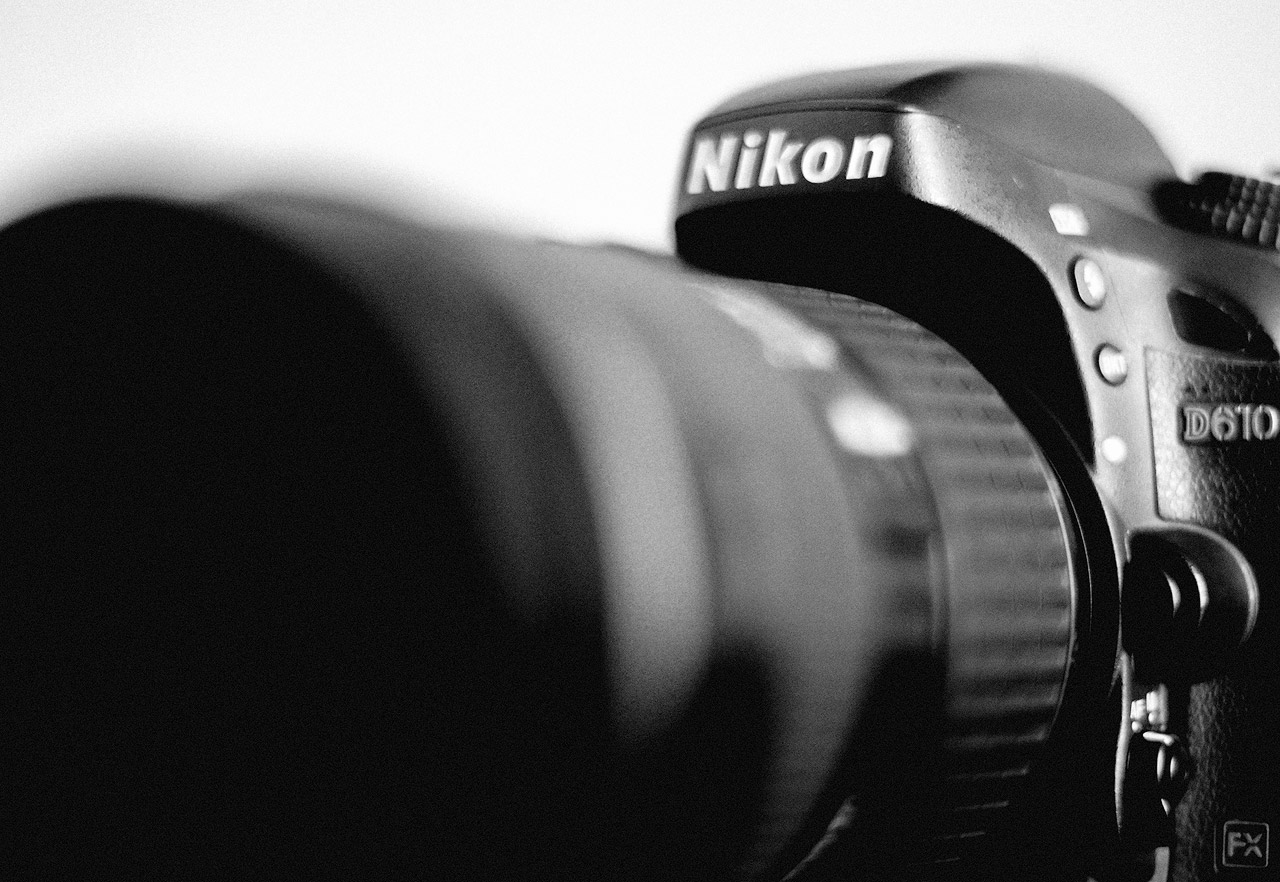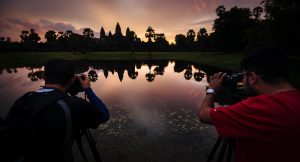I’ve been a faithful Nikon shooter since 2012; so faithful in fact that for a time I would regularly rib my Canon-using counterpart at ATP, Régis Binard, for his brand choice. I drank the Nikon Kool-aid.
Lately, however, I’ve found cause to stop bullying him: Nikon are making me nervous.
What’s all the Fuss About?
It was recently reported that Nikon had made “extraordinary losses” and had thus canned their DL series of fixed-lens cameras mid-development. Quite understandably, the use of the emboldened phrase above sent the photography blogs into tailspin, and while the video below from Tony Northrup reassures us that it’s perhaps not all doom and gloom over at Nikon HQ, the last fortnight has undoubtedly been one to forget for anyone, like me, who has poured many thousands of their hard-earned dollars into a Nikon system.
It’s worth mentioning at this point that this post is not (at least so far as intention is concerned) meant to read as a scathing Nikon witch-hunt, but merely as an exploration of the sources of my, and potentially countless others’, frustration. There is every chance I will fail in this endeavour.
A Silent Alarm
Alarm bells, for me, started ringing not because of anything that Nikon specifically announced, but more in what they didn’t.
February 26th saw the curtain come down on CP+ 2017, one of the photography industry’s biggest annual shows, held in Japan. Despite Nikon announcing that they would now be “concentrating on mid- to high-end DSLRs,” they didn’t find it pertinent to elaborate on this in any way, nor did they bring anything of note to the show. Their booth displayed only ‘100th anniversary’ editions of equipment already available for 1 year+.
I won’t have been in the minority of Nikon shooters expecting the announcement of a new full-frame body, particularly given the rumours of the last six months. I don’t feel my expectations were unreasonable given that Nikon have previous for releasing new models off the back of their flagship update. When the D4 hit shelves in February 2012, it took only one month before the D800, their top-end “prosumer” body complete with the same AF system found on the D4, was available, and another month more for the D800E. The D600, albeit riddled with problems that Nikon really ought to have discovered in testing, came out in September 2012. By February 2013, even the D7100, Nikon’s top-of-the-crops offering of the time, was out and sporting that same 51-point AF system. With the Nikon D5 having been announced in January 2016, and with fourteen months having since elapsed, one might reasonably have expected an update to the full-frame lineup; as it happens, Nikon have announced precisely ZERO updates to their FX range, which is now feeling decidedly outdated. This doesn’t feel much like they’re “concentrating on mid- to high-end DSLRs” to me (their words, not mine).

I can’t be the only one feeling incredibly frustrated at Nikon’s lack of progress and consistency; I’m starting to wonder if the folks at Nikon R&D are currently doing anything other than shredding everything from the DL series filing cabinet.
Credit Where Credit’s Due… and Where it Isn’t
Now Nikon are to be truly commended in the development of their new 153-point AF system with 99 cross-type points. On a trip to Singapore last year I was able to get my hands on both the D5 and D500, and both are sensational cameras that seem almost incapable of missing focus when handled properly. The addition of touch-focus for video will have Canon sweating re their market share of DSLR-toting filmmakers…
…But, and this is a big BUT, the Nikon bodies featuring these new-and-exciting developments aren’t such an attractive proposition for those already invested in the FX system. Great as the D5 is (and price aside), it’s a great, hulking monster that necessitates a new gym membership; it really isn’t a suitable solution outside of the sports/wildlife/commercial spheres. The D500, with removable battery grip, is. But that APS-C sensor necessitates the purchase of new lenses in order to continue working at accustomed focal lengths. If that isn’t off-putting enough, Nikon aren’t exactly famed for the quality of their DX lenses, sending most professionals (who’ll want the best optics) in the way of third-party manufacturers like Sigma. The photographers who do so will inevitably end up throwing their D500 out of the window mid-way through the archaic AF-fine-tuning process with Sigma’s USB dock. Where is Nikon’s 5D Mk.IV competitor? Is the D750 (an excellent comparator to the 5D Mk.III) likely to become the next D300S/D700, with owners crying out for years for a replacement that never comes? Apparently it’s in development, but only a Honduran newspaper and a fellow sat in a Scandinavian forest know anything about it. Consistency and predictability are an important element of doing business; Nikon appear to have been getting it wrong for some time now. Why aren’t they addressing rumours? Why are they holding their users at arm’s-length?
Greener Grass…
Let’s contrast what Nikon are doing with a different model, that of Fujifilm, a brand continually surpassing my expectations with each new camera of theirs I get my hands on (by way of guests who fetch them along to my photography workshops in Cambodia). I suspect that in seriously comparing these two, I’ll hardly be forming part of the minority.

Remember when it was heavily rumoured that Fuji were working on a top-secret full-frame mirrorless camera and they just came right out said, “No, we’re not.” Not exactly revolution, is it? But seemingly it’s beyond what Nikon are willing to do. So transparent are Fuji in their product development they even have a “Roadmap” on their website. For any of you who are unfamiliar with the Fuji Roadmap, it is essentially a list of the X-mount products currently in development, with a rough expectation as to their launch date. One oft-cited downside of shooting Fujifilm is a relatively small selection of lenses; being able to see what the not-too-distant future holds is priceless (and that lens range is coming along nicely now, by the way). While Fuji might not list their upcoming cameras as part of their Roadmap, we all knew that both the X-T2 and GFX 50S were well on their way; the brand seem to deal with speculation far more efficiently than Nikon.
Now I’m not so naïve to think that Nikon should be announcing new cameras as soon as the R&D process begins; they’d never sell a model more than a couple of years out of production. But when rumours have been circulating for almost a year, it’s high time they were addressed. Treating users with the degree of openness exhibited by Fujifilm seems lost on Nikon; customer-centricity is simply not as fundamental a part of their business model as it is for Fuji, and that’s before we even get onto the topic of free firmware updates. There have been precisely ZERO updates for my Nikon D610. While Fuji are continuing to roll out updates for cameras long out of development, Nikon seem content with a provenly dodgy SnapBridge. Whether Nikon like it or not, software development and updates have to form part of their vision.
What’s the ONE THING Nikon Need to Do Better
In short, Nikon need to adapt.
They used to be innovators, something that could arguably be said of Fujifilm and Sony right now. Ask any Fuji or Sony user what they think of their respective brand and you’ll undoubtedly trigger a bout of gushing fanboy drivel. I wish I could have the same reaction if questioned about Nikon, but these kind reactions have been well-earned (and likely carefully calculated) by ensuring those already invested in a system are made to feel that they haven’t been forgotten about. I’d love for Nikon to stop looking at competitors products while asking, “How do we stop people from buying this?” as was so plainly evident with the GoPro/KeyMission and the 7D Mk.II/D500. Instead, they should be using honest assessment of THEIR OWN lineup and its capabilities as the means of determining product development focus. I don’t want to be given a reason why not to buy into Canon, or Fuji, or Sony; I want a reason to love Nikon – but that’s just not how I feel right now.





